April News from the the Country Park!
We at the Country Park hope you had a pleasant and enjoyable Easter. The end of March and first days of April brought with them some fine weather and encouraged the emergence of wildlife and greenery in the Country Park. Whilst the weather of the coming weeks of this month appears to be a mixed bag, the further relaxing of Government restrictions means we have a little more freedom to meet safely with our family and friends at the Country Park. Read on to find out what we've been up to in recent weeks and what we have to look forward as we move on into Spring!
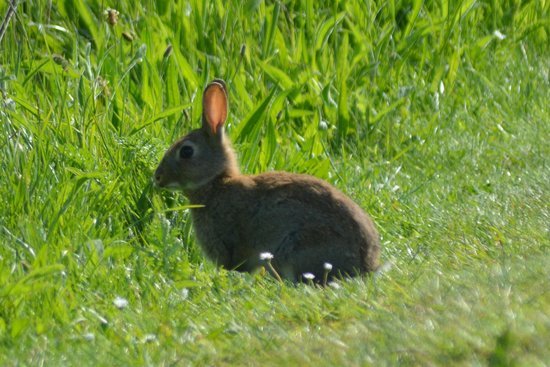
A Snapshot in Time: Hessle Cliff Census, 1881
By Alex Ombler, Quarry to Country Park Project Officer
In March many of us completed the 2021 census. Censuses in the UK date back to 1801 and are extremely useful documents for historians and researchers. We can learn much about the people and households of those who once lived in the vicinity of the Country Park and Foreshore, an area which was once known as Hessle Cliff.
 A page of the 1881 detailing the inhabitants of Hessle Cliff.
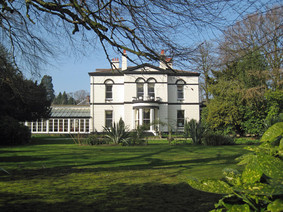
The 1881 census tells us that the occupants of Cliff House (pictured right), which still stands today on Cliff Top Lane, was the Hearfield Family. William Hutchinson Hearfield, a 70 year-old 'quarry proprietor' is recorded as the head of the household. The census tells us that William lived at Cliff House with his wife Elizabeth (64) along with their son David (27) and daughter Elizabeth (23). There were also two young children residing at Cliff House at the time the census was taken; Elizabeth (5) and Ernest (3), the grandchildren of William and his wife. Also living with the Hearfields was their cook named Jane North (21) and Sarah Milner, a domestic servant.
|

William had moved from Hull to Cliff House during the previous decade to be closer to his chalk quarry, which now forms the site of the Country Park. Cliff House was also conveniently close to the whiting mill on the Foreshore, which he had bought just over a decade earlier. No doubt, William would walk the short distance down to the quarry and mill (pictured left) to see that everything was running smoothly and that his employees weren't slacking! For William, Cliff House's location was also advantageous for other reasons. For example, it offered villa style living in the countryside with the fresh North Sea breezes off the Humber, away from the industry and congestion of Hull. The house is also close to Hessle station, so William could easily have caught a train to conduct his business affairs in Hull or meet his customers in the West Riding.
|
When the mill opens you will be able to 'meet' William Hutchinson Hearfield via our new audio visual presentation inside the mill. This short historic film was filmed in the Country Park and inside the mill, with William portrayed by local actor Gordon Meredith |
|
 |
By Bev Hylton, Countryside Access Officer
 The willow tunnel is a great place to sit and enjoy watching the many species of birds visiting the feeding stations.
 |
|
Luckily, the flood water in the main meadow subsided just in time during March for us to get in and complete the annual living willow work. The tall tunnel and screens at the bird feeding station are made of willow, and each year we undertake a taming of the new growth. The previous summer’s growth is either woven back into the structure or pruned back. This stimulates new growth, as well as keeping the willow at the size that is desirable. A thick layer of fresh new willow provides an excellent habitat for invertebrates and is also valuable cover for the birds feeding at the tables. |
This year we’ve also created a basket wall at the base of the screens, by weaving several long flexible lengths between the sturdy well established stems. The aim is to reduce the disturbance to birds by curious dogs, by deterring them from running though the feeding station. Thank you to everyone who has kindly brought food for the birds this winter; the populations of common garden birds continue to thrive. It’s a good spot to refresh your identification skills of great, blue, coal and long-tailed tits. And for me, I never tire of watching a song thrush whether it is feeding on a snail, washing in a puddle or singing from a tree top perch. |
|
 |
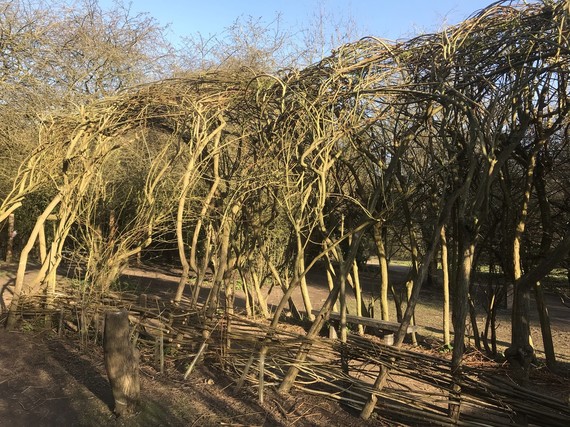 In the coming months the willow screens and tunnel will tranform into a scene of lush greenery.
Picture Perfect
By Sally George, Quarry to Country Park Volunteer
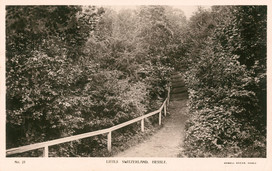
Last month I researched the postcard 'Little Switzerland, Hessle' sent to Corporal Henry Alfred Ritchie who was a nurse at the Military Hospital in South Tidworth, Hampshire. He was there aged 26 on the 1911 census. The postcard reads "D. H. I am spending Easter with Uncle wouldn't be done, hoping you are allright all well here going to a football match in Hull this afternoon. From Father". This would have been Henry John Ritchie, a Foreman Stevedore (dockworker) in London.
|
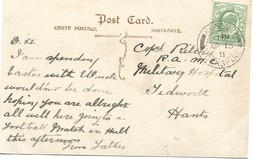
The Uncle mentioned is Charles Ritchie who was living in Cliff Road in 1911 and his occupation was 'coastguard, H.M. Navy men'. He lived with his wife and daughter and next door was a man with the same occupation. I have tried to locate which houses these would be and from the census it could be the two houses before the Three Crowns but it is hard to tell. I think the last landlord of the pub was in 1872 and the coastguards are mentioned on the 1901 and 1911 census but no pub. Another postcard to add to my list for further research when we have sight of the 1921 census.
|
The Hessle Quarry Strike of 1893, Part 1
By Dianne Smith, Quarry to Country Park Volunteer
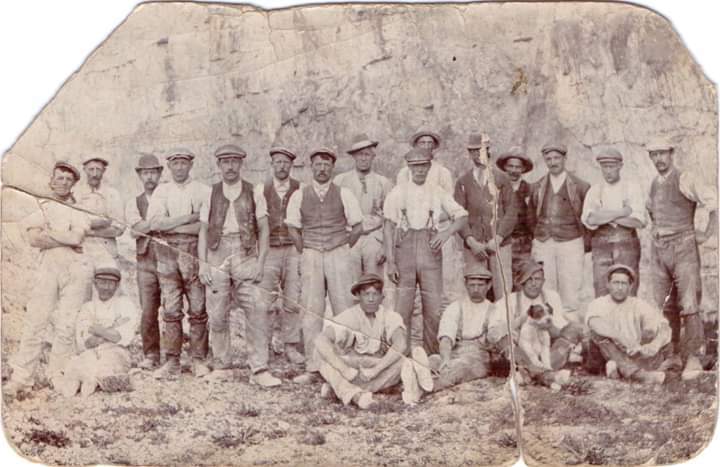 The ‘new unionism’ movement sweeping the country in the 1880s came to Hessle in 1892. The movement intended to provide membership for unskilled and semi-skilled workers. The Gasworkers’ and Labourers’ Union was established in Hessle by May 1892 and had recruited workers from the quarries and whiting mills at the Cliff, which now forms the Humber Bridge Country Park. According to John Hearfield the employers began to feel the ‘pinch’ almost from the start, the unions forcing wages up.
By September 1893, the employers had decided to act and issued certain conditions to their workforce which stated that the foremen in the chalk pits were to sever connections with the union, employees should work with non-unionists, employers should employ and discharge who they wished and all union branch officials would be discharged from their employment.
Union officials from the Hull branch visited Hessle to talk to the workers on Tuesday 20th September and advised the men to strike – which they did. Sixty workers from three quarries at Hessle Cliff came out on strike, bringing production in the quarries, and consequently at the whiting mills, to a standstill.
A strike of dockworkers in Hull earlier that year had caused chaos at the docks for several weeks, leading local shipowner Arthur Wilson to call in ‘free labour men’, and about a hundred of his clerks who had volunteered to act as dockworkers, to load and unload ships.
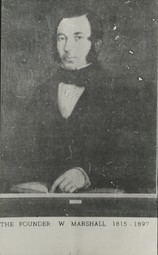 |
|
Not to be out-manoeuvred by the union, Hearfield began to employ non-union labourers to work his quarry, claiming his quarry and mills were in full working order. This was obviously going to cause some rancour and Hearfield called in the assistance of the local police to provide an escort for these workers, and any others still willing to work, to and from their homes. William Stokes, the Hessle Branch representative of the union, told the Hull Daily Mail that those who went to work on the Thursday had “received a lively reception.” This consisted of about fifty strikers following them through the town, “hooting and groaning heartily,” together with a large gang of lads booing and “banging on old tin pans and kettles.” It must have been quite a spectacle in the normally quiet town of Hessle! |
Although the strikers were generally well-behaved, Harold Lowthorpe, a farm worker who had been helping out at the Cliff during the strike, was hit on the head with a stone thrown from the crowd. Although it seems unclear where the stone had come from, two witnesses identified one of the strikers, James Stewart, as the culprit and he was fined 20s (a lot of money in those days).
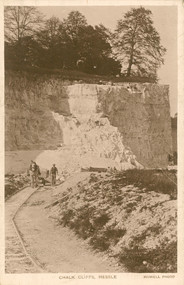
Feelings were obviously running high over the strike as is shown by a case which came before the Hull Police Court concerning an incident on the 25th September. William Stokes had been prosecuted for assaulting George Marshall in the inn-yard at the Admiral Hawke. Marshall had been drinking with William Oglesby who had been working at the quarry during the strike. According to Marshall, Stokes had rounded on him saying he [Marshall] was “as bad as the other man” and “no good.” The argument had continued outside where, Marshall claimed, Stokes had carried out “a furious assault on him”, cutting his face and blacking his eye. Stokes laid a counter-claim saying that Marshall had provoked him.
However the Court dismissed Stokes’ claim and fined him 10s and costs. One of the men named in the newspaper as giving evidence at the trial, later felt compelled to place a disclaimer in the Hull Daily Mail to the effect that “he was not concerned in any way with the assault case arising out of the Hessle strike.”
You can read Part 2 of the story of the Hessle Quarry Strike in next month's newsletter.
|
From the Archives
Housed in the Treasure House at Beverley, the collections of East Riding Archives contain many fascinating documents relating to the heritage of the Humber Bridge Country Park and Hessle whiting mill. In this first of a new monthly feature, we will take a look at some of the archive materials which help us to piece together the rich and varied history of the Country Park. First up, is this intriguing enclosure plan of Hessle from 1794 (Archive Ref: DDBD/28/1).
 A detail from the enclosure plan of Hessle, 1794. (Archive Ref: DDBD/28/1).
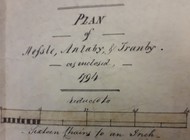
In England enclosure began in the 12th century and proceeded rapidly in the period between 1450 and 1640, when its purpose was mainly to increase the amount of full-time pasturage available to manorial lords. Much enclosure also occurred in the period from 1750 to 1860, the period when this plan was produced, when it was done for the sake of agricultural efficiency. By the end of the 19th century the process of the enclosure of common lands in England was virtually complete.
This detail from the plan shows the extent of the chalk quarry marked 'stones quarries', which now forms the Country Park, during the late 18th century. It also bears the names of the owner of each parcel of land. Alongside the south-western edge of Hessle, some other well-known features of the local landscape are also featured, including Hesslewood to the west and Hessle Haven to the East.
|
 |
|
Although Halloween is a long way off, there has been some 'spooky' activity going on at the whiting mill on the foreshore. A lady visiting the Country Park and foreshore took this photo of the mill which seems to have a ghostly face in the window, The lady said "We were having dinner in the car. I just said to my husband [there is a] face there. He doesn't believe it but I can see it. Other people have said the same [and] also said, if you look closer, [you] can see more spirits in the picture."
What do you think? Please let us know if you've had any paranormal experiences in and around the Country Park and mill, by emailing alex.ombler@eastriding.gov.uk
|
|